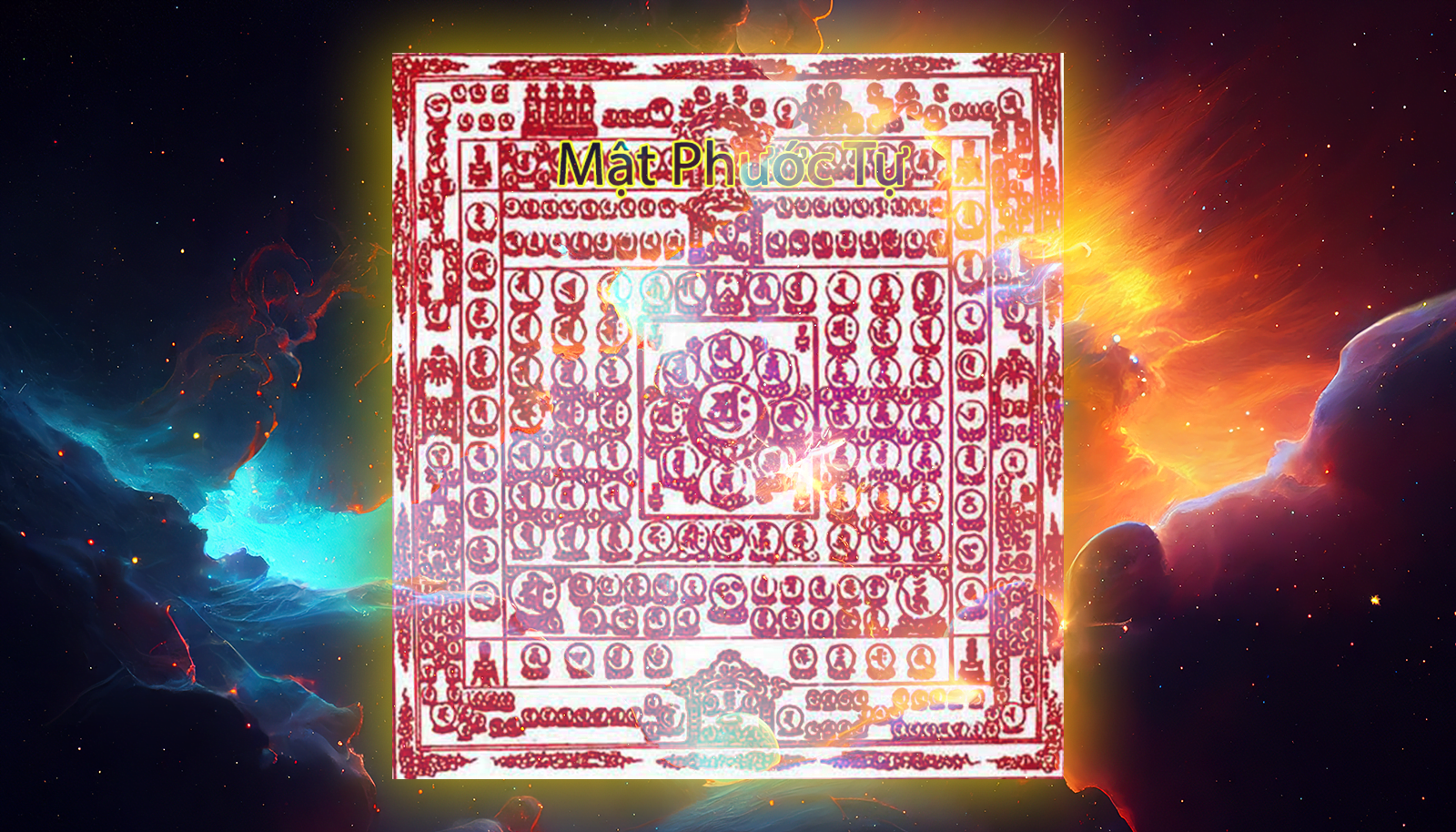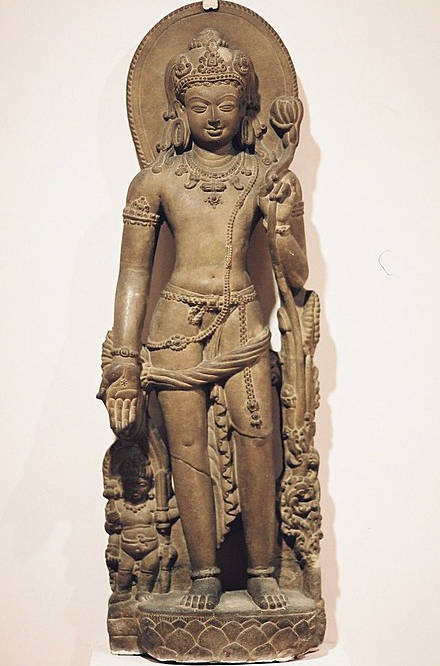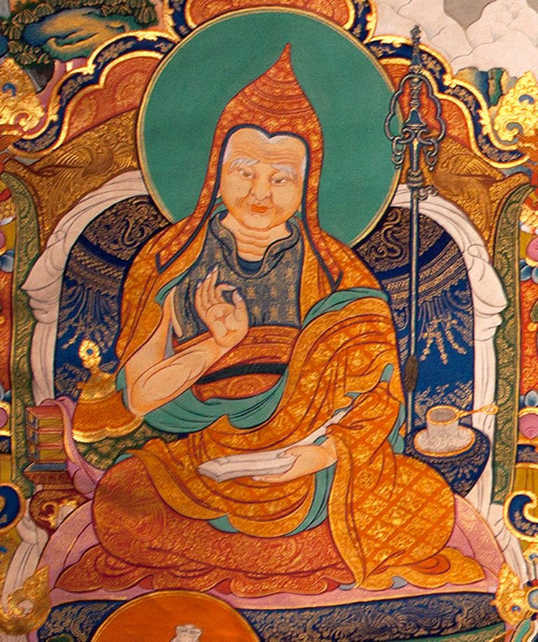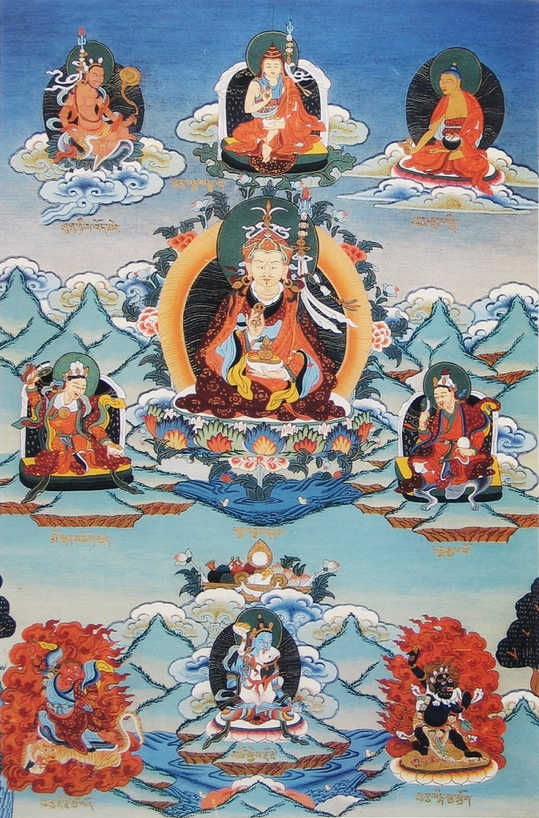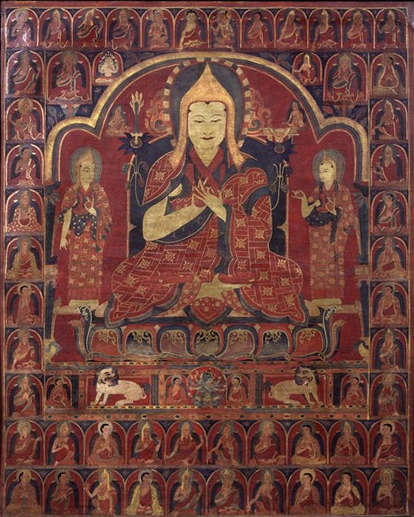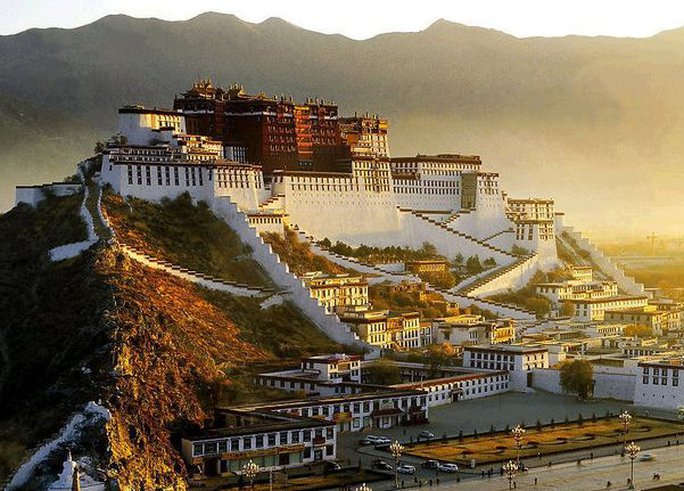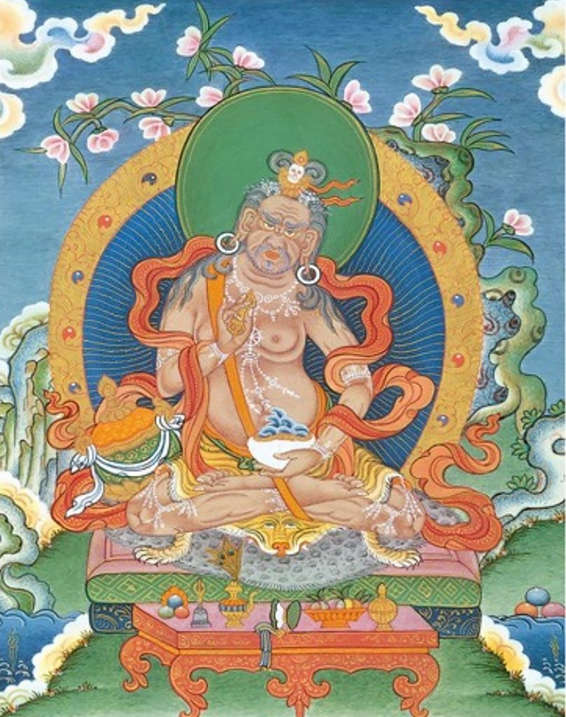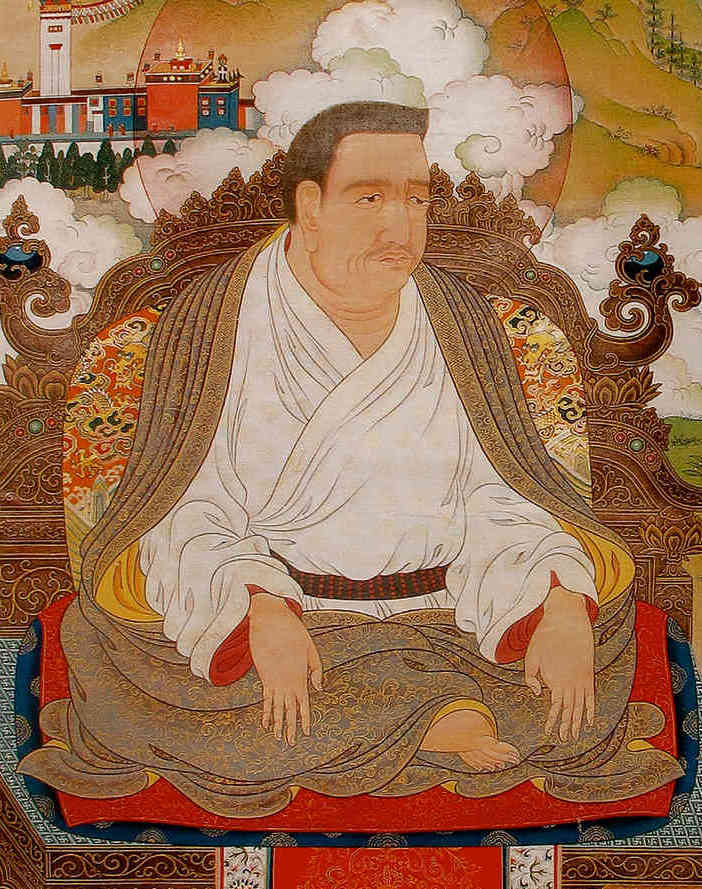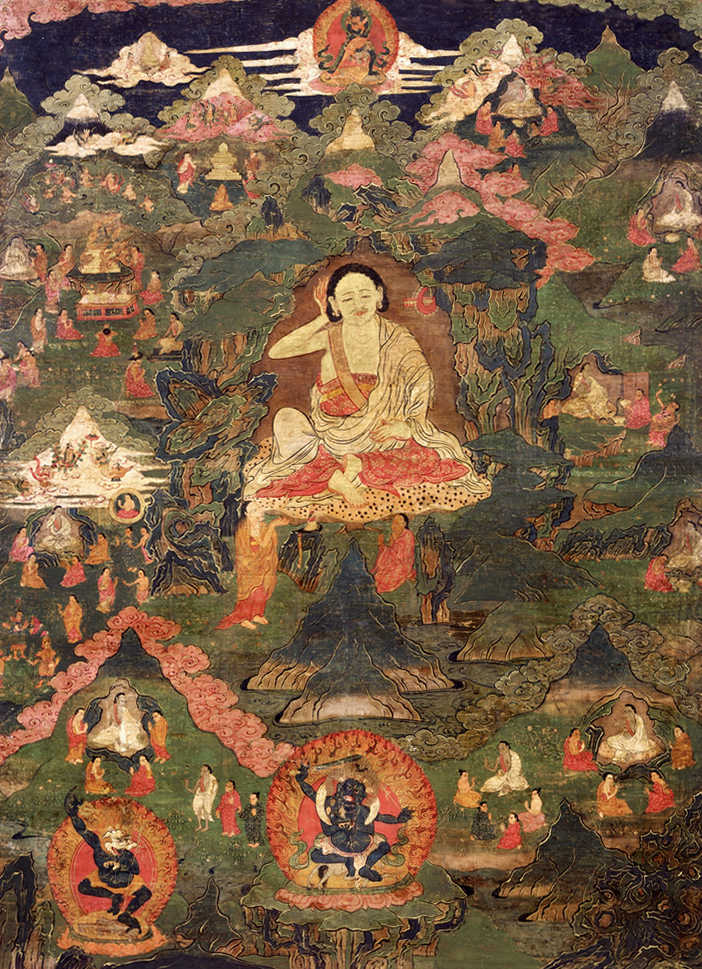I. BRIEF HISTORY OF SECRET BUDDHISM IN TIBET
The people in Tibet did not have a serious religion before the introduction of Secret Buddhism. Bon Polytheism was the traditional religion for Tibetans. They worshipped Genies, evil spirits and Demons. They prayed to anyone that helps satisfy their worldly desires. The religious practitioners made their living by selling charms and performing voodoos. They have thousands of tricks to cheat the ignorant people by creating debased superstitions.
Tibetan history noted that Buddhism was introduced in 137 B.C. A Buddhist monastery was built and let to fall into ruins. It was because Buddhism was too complicated for people to understand and this had to do with their lack of education, their superstitious beliefs, and their materialistic view toward religion. Thus, the first attempt to preach Buddhism failed.
In the year 371 A.D a number of missionaries came to Tibet. They taught the religion of compassion and forgiveness with little results. The converts were still few.
In the 7th century the Tibetan King, Srong Tsan Gampo became an admirer of Buddhism. He sent an envoy to India to inquire and get Buddhist scriptures. He invited monks to Tibet to explain the Dharma and to translate the Sanskrit scriptures.
According to legend, Avalokistesvara (Kwan Yin) appeared in the dream of Gampo and reminded him of his past life. Since then the king devoted himself to Buddhism, and wanted it to become the national religion. The king had two queens who were fervent Buddhist devotees. One was Princess Bhrikuti Devi from Nepal and the other was princess Wen-Chen, the daughter of King Tang De Zong. Both had greatly contributed to the foundation of Buddhism in Tibet.
Most monasteries in Tibet worshipped King Srong Tsan Gampo and the two queens, honoring their services to the society of the triple jewels..
A. The Old Secret Sect:
In the 8th century, King Thrisrong De Tsan (740-786) received two eminent monks from India. They were Antarakshita and Padma-Sambhava. They were enlightened expert masters in Dharma debates. They possessed magical powers that helped them propagate the Dharma successfully. Both came to be admired by the native people and the conservative monks.
From that time on, Tibet became a Buddhist country with higher learning in religious philosophy.
In 747AD Padmasambhava, an Indian Sage came to Samye in Tibet on the king’s invitation and established a monastery, where he taught the Mahayana doctrine. The Tibetan people called him Guru-Rimpoche (the precious teacher) or Padma Jungne (the Lotus Born). He was the famous professor of Esoteric Sciences at Nalanda University. In 749 AD he officially founded the school of ancient Esoteric Buddhism Adiyoga.
The majority of people in Tibet converted to Buddhism. Tibet had greatly evolved thanks to its influence. The education and civilization made rapid progress, which lasted more than 500 years.
B. The Madhyamika Sect
In the 14th century, a monk came forward and reformed the then declining religion. He was Tsonkhapa, born in the northern region of Tibet in the Am Do province, a master in debate and exposition of the Dharma.
Since the development of Buddhism over 500 years, and especially in the last 100 years, Buddhism had alarmingly deteriorated. The monks were more preoccupied with their family’s matters than with the purity of the mind. They seldom meditated, even though meditation was known to be the only way to have wisdom and liberation.
Instead of focusing on religion, they devoted themselves to sorcery, magic, and exorcism, using spells and charms, fortune telling, and got involved in divinations. They resorted to tricks to mesmerize and to make people donate to them out of fear and respect. Instead of using the best ways to benefit the world, and convert people, they perverted and abused the Dharma. Such was the Buddhist clergy; the lay worshippers were even less educated. They were weak and greedy and practiced religion only for self-gain. All of them had contributed to the damage of the Buddha’s philosophy.
Seeing this sullied situation, Tsonkhapa decided to guide the monks and the laymen back to the right path. He advised them to be chaste and to keep the religious rules. He attacked bad traditions and the wrongful worship and rituals of Deities. Tsonkhapa not only used deep logic to fight off arguments and to wake people up, he also demonstrated supernatural powers to win their faith. He rapidly attracted a great number of followers and re-established peace and order in the Buddhist temple. Tsonkhapa was well known throughout Tibet. Numerous famous monks had come from central Asia and from neighboring countries to study with him.
In 1409 AD, he founded the Ganden monastery in Lhassa. It was a big temple. His followers grew to such an extent that his disciples had to start two other major monasteries, Drepong and Dera. When he died, the number of disciples from the three monasteries was over thirty thousand. The Tibetan and Mongolian people considered him a Buddha coming to this world to institute religion for Tibet. Tibet people still say: “First Sakyamuni Buddha, last Tsonkhapa”. The religious reformation of Tsonkhapa had a lasting result until later generations. His sect was called Madhyamika or “Middle Way Contemplation”. From this originated the Kahdampa sect whose ruler is the Dalai Lama. Tsonkhapa transmitted the teachings to his disciple Edungrubpa and entrusted the religion that he reformed and named Lamaism. Since then the head of Lamaism, who is the Dalai Lama ruled Tibet, overseeing its religious and political aspects.
By tradition before the Dalai Lama dies, he will reveal his next rebirth location. The assembly of Lamas will go there to find the infant successor who is supposed to be the Dalai Lama’s reincarnation, and bring him back for coronation as the next ruler. The Dalai Lama was revered as a Buddha (Arhat Buddha) in his lifetime. He resided at the Potala palace in the city of Lhassa. Under him was the Panchen Lama, who was also regarded as a living Buddha. He helped the Dalai Lama manage the temples and take care of the monks. He resided in Trashi Lump in the fort of Shigatse.
In Tibet, the monks selected all government officials. There were many monasteries in the capital of Lhassa. Some of them were very large and had as many as ten thousand monk residents. Everyone in Tibet turned to Buddhism, which became the national religion.
C. The KARGYUTPA SECT (the sect of monks wearing cotton):
The members of the Kargyutpa sect were the followers of the Mahamudra sect (Great Mudra) who used in Dharani, Mudra and Yantra in meditation.
By tradition, Tilopa, who lived the 2nd century AD, received the philosophical teaching of the Mahamudra through the spiritual power of Dorge Chang Buddha. The teachings became the basic tenets of the Kargyutpa sect. Tilopa transmitted it to Naropa, who was an eminent teacher of mystic sciences at Nalanda University in India. Naropa transmitted the secret teaching to Marpa who came to India and returned to Tibet as an accomplished priest to start the Kargyutpa Sect and teach Secret Buddhism to Tibetans. Among them are four outstanding disciples who reached the glorious liberation:
Tsurton Wangay was from the east country of Dol. He had the character of a Lion and possessed the Secret wish-fulfilling gem of the Secret Doctrine. His ” strong-as-claws” determination helped him look upward as he achieved liberation.
Ngogdum Chudor was from the South. He was compared to a tiger having the Secret Dharma for its striped fur. His claws had dug deep into the four great virtues of a Bodhisattva. He looked upward as he had departed from all illusions in the illusionary world and went freely to wherever he pleased.
Meton Tsompo was the pillar of the West. He was compared to an eagle having the Secret Dharma for its wings. He had forever escaped the traps and pitfalls of this illusory world, and was free to fly anywhere because he had attained liberation.
The high pillar of the North was Thogapa (meaning delightful to hear), also named Milarepa of Gung Thang Country. He was deeply tinted with Secret Dharma. His life was a permanent endurance like the big rock where birds came and built their nests. He was a great man who had quit the common life to achieve liberation. Marpa’s traditional robe had been handed down to his followers, and his sect has developed a good reputation by his successor Milarepa.
Milarepa
Milarepa or Milathogapa lived from 1055 to 1135 AD. The life of this extraordinary knight began at the age of seven. He was still naive when he started to experience this world’s hells, the hell of human’s endless greed and the hell of his own burning hatred against his uncle. The latter had stolen all his family’s properties after his father died. The destitute seven-year-old Milathogapa endured many hardships until he reached the age of 15. Then riding on his horse, he set out to find a sorcerer and learn black magic so he could avenge his helpless, but very proud mother. He found his teacher and upon completing his learning, he used his magic skills to kill forty to fifty people that were related to his two deadly enemies, his cruel uncle and aunt. He also destroyed their crops and their property. Afterward, Milathogapa deeply regretted his actions. He was intensely disturbed and wanted to find a teacher and learn the way of cultivation. He wished to be enlightened and liberated and he would sacrifice anything including his life to obtain this goal.
The path of great virtue and great austerity became Milathogapa’s destiny. He finally met his predestined guru who was the great translator Marpa, the original founder of the Kargyudpa sect of Tibetan Buddhism. After he was thrown eight times by Marpa to the bottom of the pit of despair, the Deities cleansed his sins. He then received the secret teaching from Marpa and after prostrating himself to say good-bye to Marpa; he headed for a deserted cave in the mountain to meditate on the way of supreme liberation. His mission was to become enlightened so that he could help sentient beings. He had made the same vow as prince Sidharta had made 17 centuries earlier under the Bodhi tree in India. If he failed to reach enlightenment he would never return to ordinary life.
Milarepa spent ten years in the snowy mountains of the Himalayas pursuing the ascetic path. His body became weak due to lack of food and inadequate clothing. Milarepa had thus dedicated himself completely to the truth, uniting his heart with heaven and his soul with the Great Being. He had become one with the eternal truth and essence of the wonderful universe.
Having attained enlightenment and liberation for himself, Milarepa was able to save sentient beings in the three realms by singing beautiful hymns. His voice was soft and flowing like the song of the bird Karavinka. It sounded like the whistling of trees and leaves, as high as the mountain top and as deep as the abyss. His voice came from the slope of the gloomy and deserted mountains of the Himalayas, and slowly spread to the highest peak of the snow-covered Mount Everest close to the eternal clouds and rains.
This was the voice from a transcendent intelligence and superior art of the enlightened Tibetan Saint, Jesun Milarepa, Great Yogi of Tibet. Wearing only thin ragged cloth and carrying a small, but powerful cane that resounded clearly the rhythm of his footsteps, Milarepa climbed up successive slabs of rocks as he came out of his ten years seclusion. He had spent the time in continuous meditation and application of the supreme powers of the Secret Doctrine.
Milarepa’s successor was not Rechung who recorded Milarepa’s biography, but was the first disciple of Milarepa, Dvagpolharge or “Je-Jampopa”. Je-Jampopa died in 1152 AD, two years after he had established the monastery of T’surika, which was the founding communal palace of the Kargyutpa Sect. Since then the Guru tradition of this sect continued on without interruption.
Tibetan Buddhism included Secret Buddhist sects. All the three sects of Ancient Secret Adiyoga, Madhymika, and Kargyutpa were right for Tibet’s situation. They grew rapidly and soon became deeply rooted in the people’s mind, making Tibet the largest Secret Buddhist country in the world. However, during the period between World War I and II, Tibet Secret Buddhism has gradually degenerated.
Related Post

A Kidnapping Story with a Good Ending
A Kidnapping Story with a Good Ending (Câu chuyện bắt cóc có hậu by thànhtâm on 25/04/12, translated by ngocxuan,...
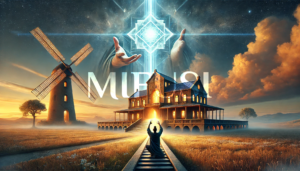
Visions from Wish Fulfilling Yantra #51
Visions from Wish Fulfilling Yantra #51 TCTĐ51: Ngôi nhà tri thức trên thảo nguyên by thachanhtrang on 15 May, 2016...

The Miraculous Tree of Tsong Khapa
The Miraculous Tree of Tsong Khapa Linh thụ Tây Tạng; by Dianichi on Sun Nov 23, 2008 10:27 am. The...

Vision of a detained baby turtle
Vision of a detained baby turtle Linh ảnh về con rùa bị nhốt posted by Hasu on 17 Jun 2017,...

Chapter IV: PRACTICES LEADING TO ENLIGHTENMENT
Secret Buddhism teachings are similar to any other teachings of Buddhism.. It has 2 aspects: Theory and Practice. In terms...

1 – MYSTICAL TALES AND ITS PRINCIPLES OLD-GURU
1 - The story about Dada the monk (not his true name): Dada is a Vietnamese with Cambodia ancestry, the...

Law of fairness in mysticism
Law of fairness in mysticism (Nguyên tắc công bằng by như-ý on Thu Feb 25, 2010 4:29 pm, translated by...

Chapter VI: I – Dharani – Mudra – Yantra – Mandala And Magic Circles
I. SIX LETTERS DHARANI KING SUTRA Shi Yi recorded in the Liang Dynasty Thich Vien Duc translation from Chinese to...
